Tuesday, October 30. 2018
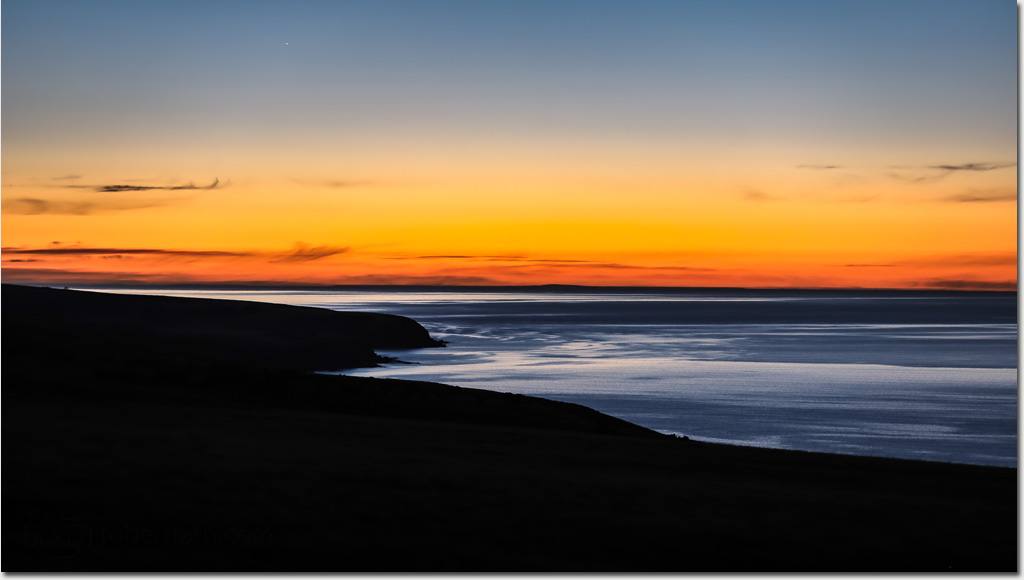
On my way home one recent afternoon diving the Fleurieu Peninsula, day turned to sunset and then to twilight as the first star of the evening became visible.
The simplicity, the colour and form of the scene looking back toward Myponga Beach was just too irresistible to pass up.
I got home a little later than planned that evening.
Photo: Robert Rath, 'Dusk Delight', 1/80s f/2.8 ISO800 125mm
Monday, October 29. 2018
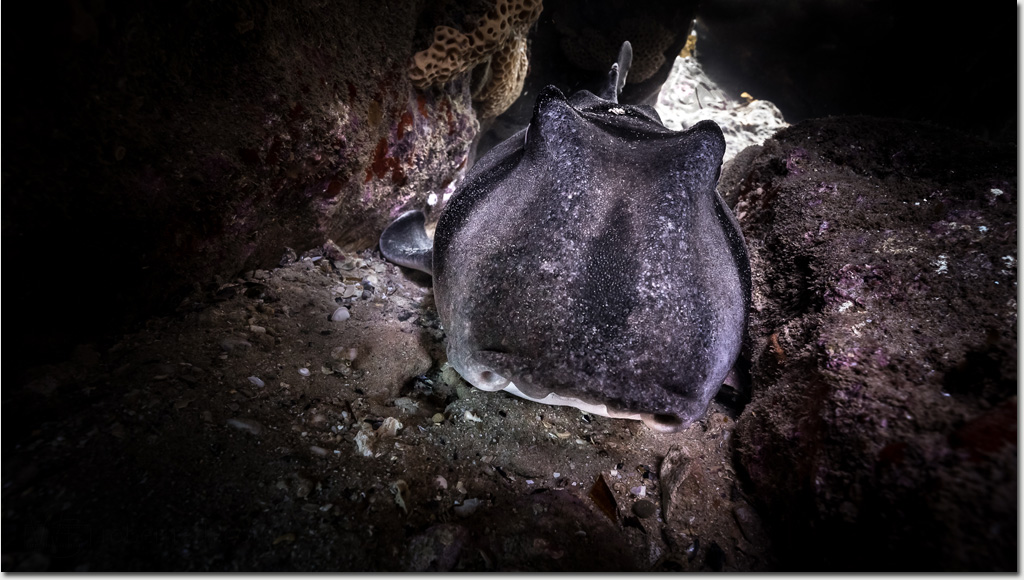
Here amid the myriad of small cave structures of Noarlunga Reef sleeps another of 'Porties' local resident species, a Port Jackson shark, Heterodontus portusjacksoni.
While doing some camera tests on the weekend I found myself peering into all the dark places I could find attempting to capture images without strobe lighting. Caves, nooks and ledges always seem to have interesting critters sheltering in safety. Often they are nocturnal creatures simply waiting for nightfall before venturing out.
I found three Port Jackson sharks last weekend, none of which was in a location conducive to really showing off this beautiful creature. At least just using natural light I did not have to worry about disturbing their daytime sleep.
Photo: Robert Rath, 'Bedtime Lair', 1/15s f/7.1 ISO1600 16mm
Sunday, October 28. 2018
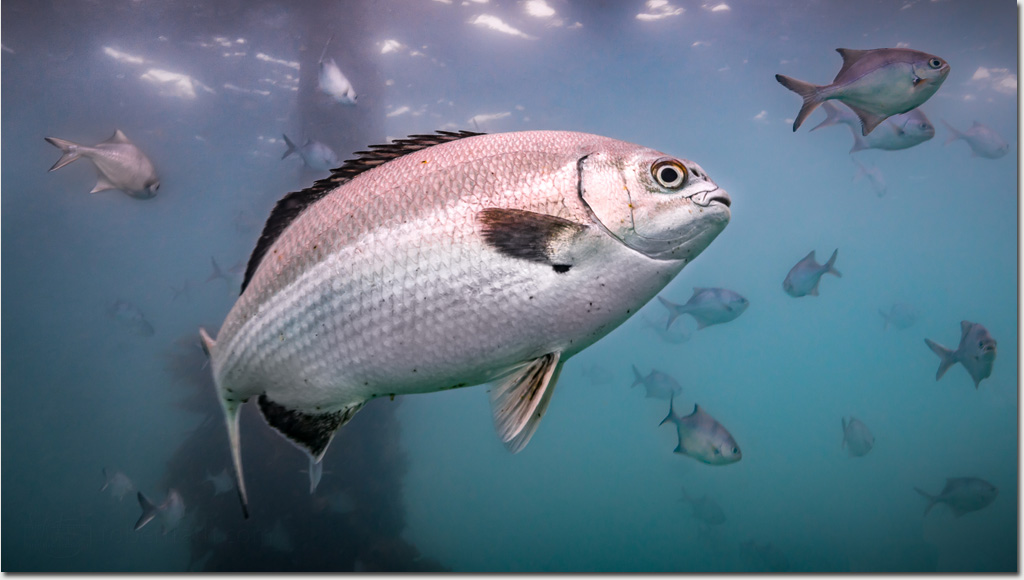
One of the most exciting fish species commonly found on Noarlunga Reef are silver drummer, Kyphosus sydneyanus. They are big, fast, often swim in large schools and are lots of fun to be in the water with.
During low tide when the inner reef is protected you might find a handful of them swimming among the sweep. During high tide when the waves are surging across the reef the silver drummer go crazy for morsels torn from the rocks.
This guy hanging with the sweep was a bit skittish and really did not want its image captured. After hovering mid-water for a while I finally got in a couple shots.
Photo: Robert Rath, 'Silver Drummer', 1/100s f/11 ISO320 35mm
Saturday, October 27. 2018
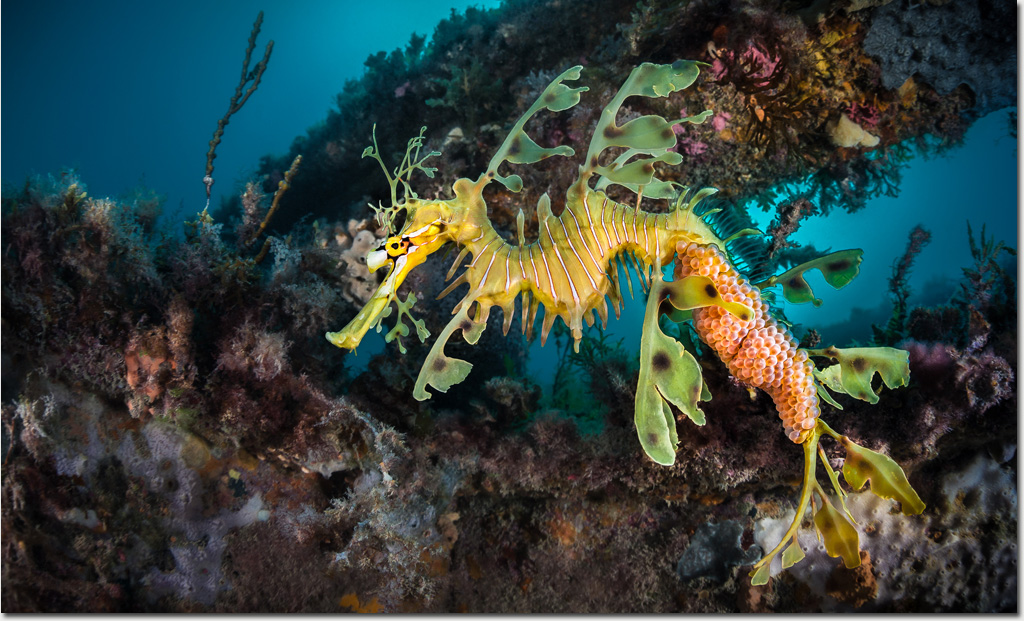
I never grow tired diving with these beautiful creatures and I still give a quiet yelp of delight when I find my first one on a dive.
Last weekend I was fortunate enough to see several of these gorgeous leafy seadragons during my dive at Rapid Bay.
This male is carrying a fresh batch of eggs which his female partner has left in his care while she goes off to do what ever females do when they don't have to nurture their young. He will protect them from predation while they develop but in a few weeks when they hatch they will emerge into a world where they will have to start fending for themselves and our male gets his leafy seadragon life back.
We are so lucky to live in a part of the world with such amazing critters as these.
Photo: Robert Rath, 'Dragon Fruit', 1/80s f/8 ISO320 15mm
Monday, October 22. 2018
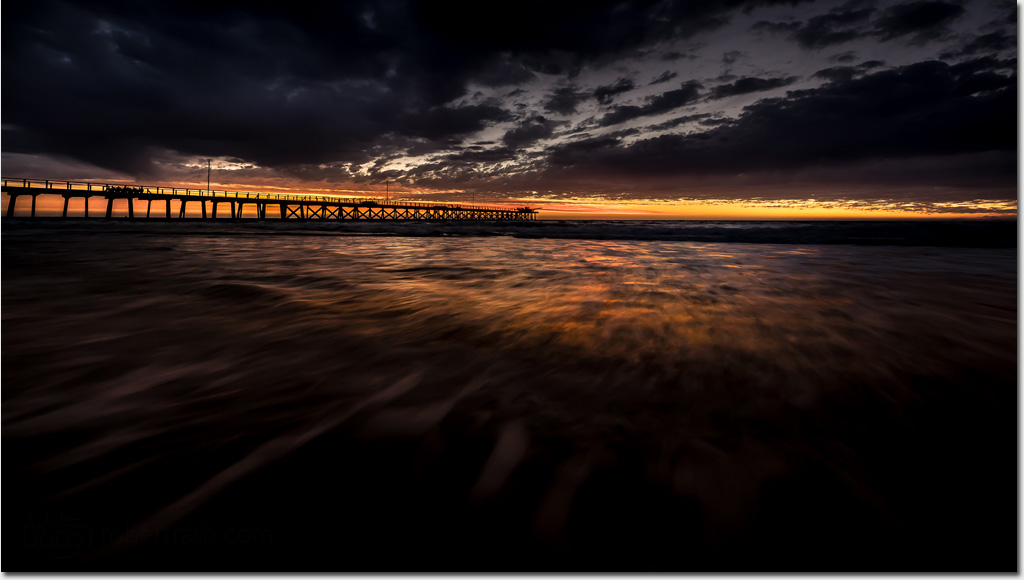
It was shaping up to be another beautiful Adelaide sunset.
I was on track to being down on the beach with the sun still shining above the horizon.
I didn't plan for my tripod falling to pieces and I didn't plan for the roadworks.
When I finally arrived the sun had long gone but I still when down to the waterline for this image.
Photo: Robert Rath, 'Down To The Waterline', 1/4s f/18 ISO1000 16mm
Saturday, October 20. 2018
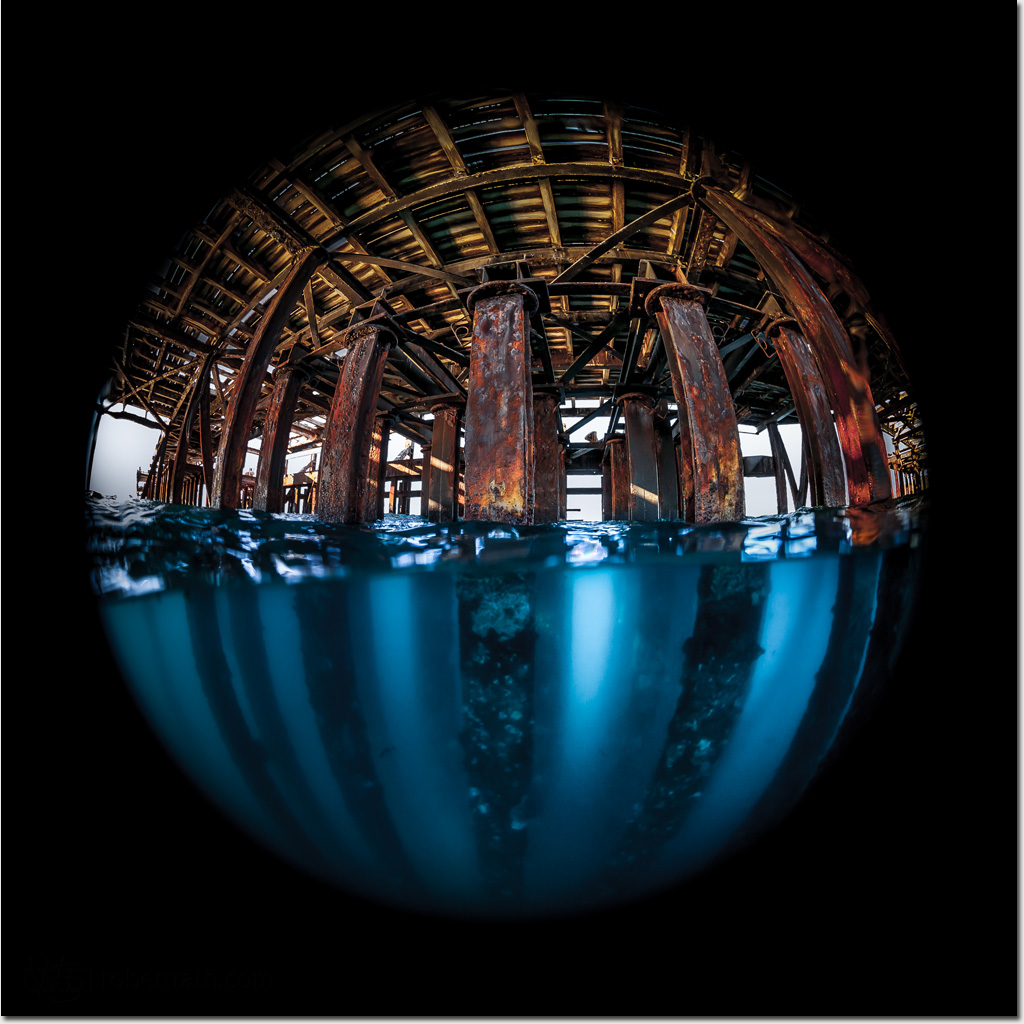
South Australian divers familiar with Rapid Bay Jetty will often talk about diving the 'T' Section.
This section of the old Rapid Bay Jetty has always been the jewel of marine life below the old jetty structure. Here the steel pylons grouped very close together provide cover for schools of reef fish while the complex bottom rubble supports a diverse benthic ecosystem.
I captured this under-over image today as the poor post weather fallout has left Rapid Bay a milky blue with only a few meters of visibility rendering the underwater scenery foggy and indistinct.
I'm looking forward to trying this image again when the conditions improve.
Photo: Robert Rath, 'Diving The 'T' Section, 1/250s f/4 ISO320 8mm
Thursday, October 18. 2018
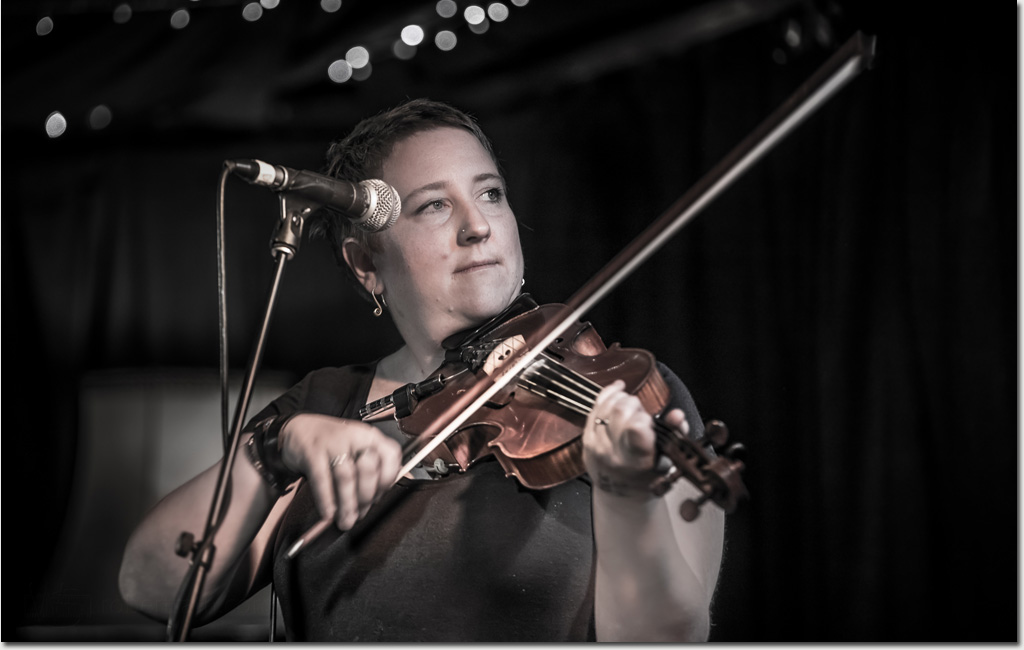
Friday night at the Wheatsheaf Hotel we experienced a double, double treat of local Adelaide musicians and folk music with the combined talents of the Fiddle Chicks, Emma Luker and Dee Trewartha and the trad music duo of Ray Smith and Kerryn Schofield.
Apologies for the labels guys!
More photos to follow but first of the rank is Emma Luker, fiddle chick extraordinaire!
Photo: Robert Rath, 'Fiddle Chicks Part One, Emma Luker', 1/80s f/2.8 ISO640 160mm
Wednesday, October 17. 2018
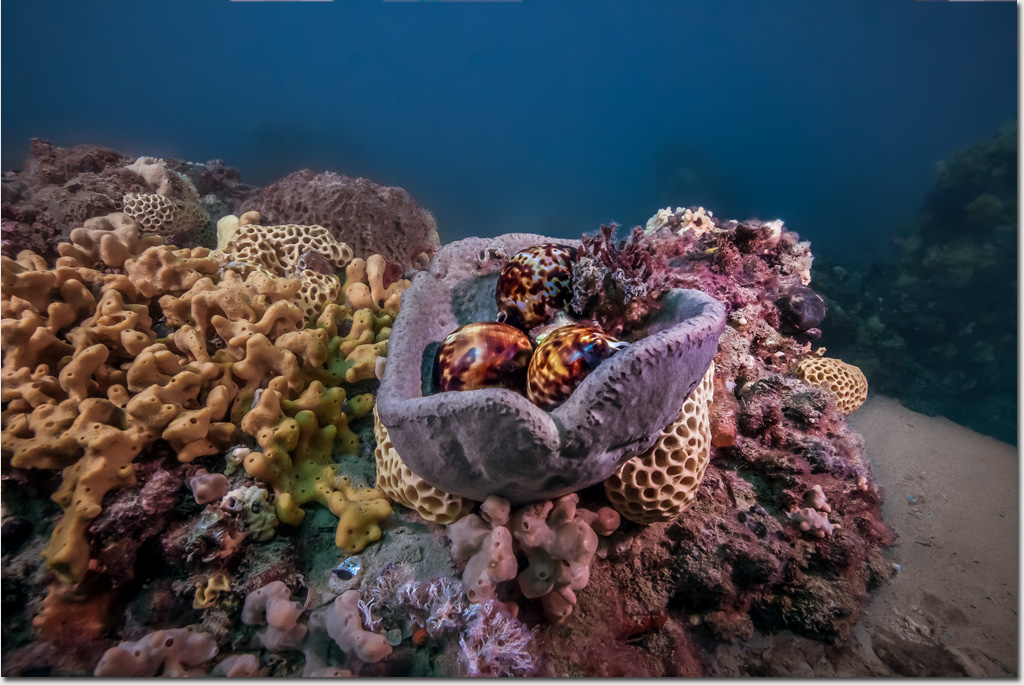
Bowl of Cowries
My dive buddy Andy spotted this extraordinary scene last weekend as we made our way north on the outside of Port Noarlunga Reef.
His odd gestures to me seemed to be asking, 'did I stage this", 'did some other divers before us stage this', or is there something special about this sponge that made three black cowries all come together like this? In nearly 30 year of diving I have only every seen black cowries on their solitary own.
Back cowries are one of our most beautiful mollusks with their glossy shells often protected by a thin velvety black mantle. Once they were prized by collectors but now the collecting of live shellfish is frowned upon and strongly discouraged. I once dived with with someone who horrified me by taking out his knife and defacing the beautiful shiny shell of any black cowrie he came upon. When I challenged his actions he said, 'I'm just making sure the collectors don't poach them'. I never did agree with him but I could see his point.
Again our local underrated Port Noarlunga dive site continues to delight and surprise with things I've never seen before in all my years of diving.
Photo: Robert Rath, 'Bowl of Cowries', 1/200s f/16 ISO640 16mm
Monday, October 15. 2018
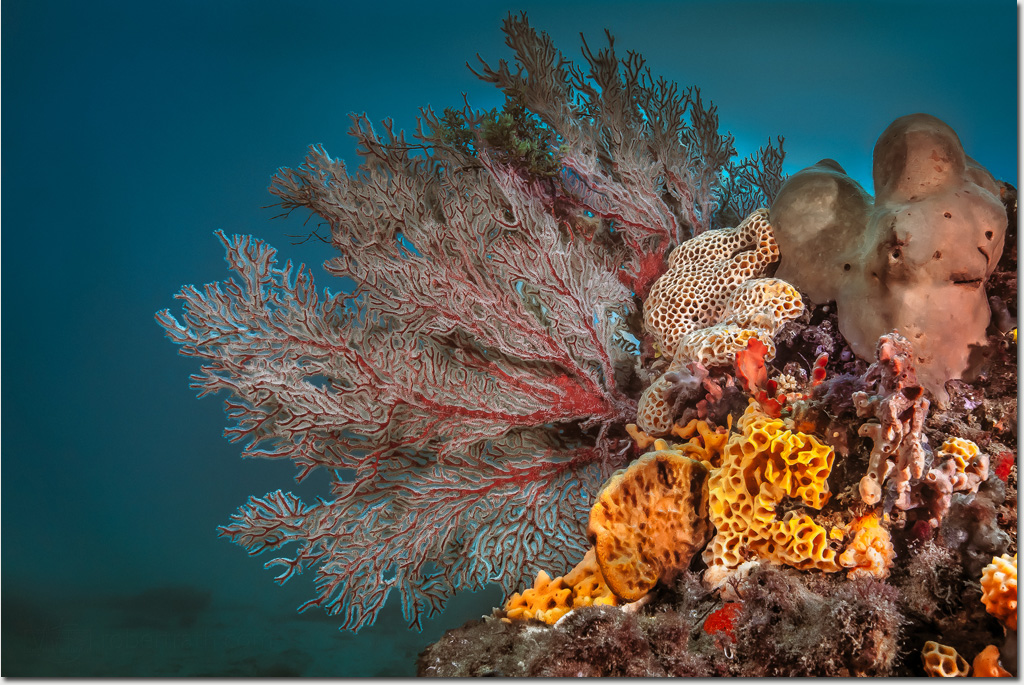
At a glance you could be excused for thinking this shot was taken on some exotic tropical reef. Certainly gorgonian corals often feature in deep tropical reef locations but they are just as at home here in our South Australian cold to temperate waters as in the tropics.
I first found gorgonian corals many years ago on one of Adelaide's most popular and underrated dive sites, Port Noarlunga Reef. Now, every time I dive here I experience a little bit of nostalgia and a little bit of regret for those divers who will only ever know this location as a training dive site.
Port Noarlunga Reef is popular because at least half of Adelaide's divers can get to it inside of 40mins, and underrated because most of them will never take the time to explore here properly. It takes about 10-15 dives to even get a feel for this interesting and highly accessible reef system. Add daylight/nighttime hours and seasons to that mix and this underrated location just keeps on delighting and surprising with its abundance and diversity of marine life.
This beautiful gorgonian coral off the south west corner of the reef in nearly 17m of water is just one of the reasons I keep coming back to dive here time after time.
Photo: Robert Rath, 'Noarlunga Gorgonian', 1/200s f/16 ISO640 16mm
Saturday, October 13. 2018
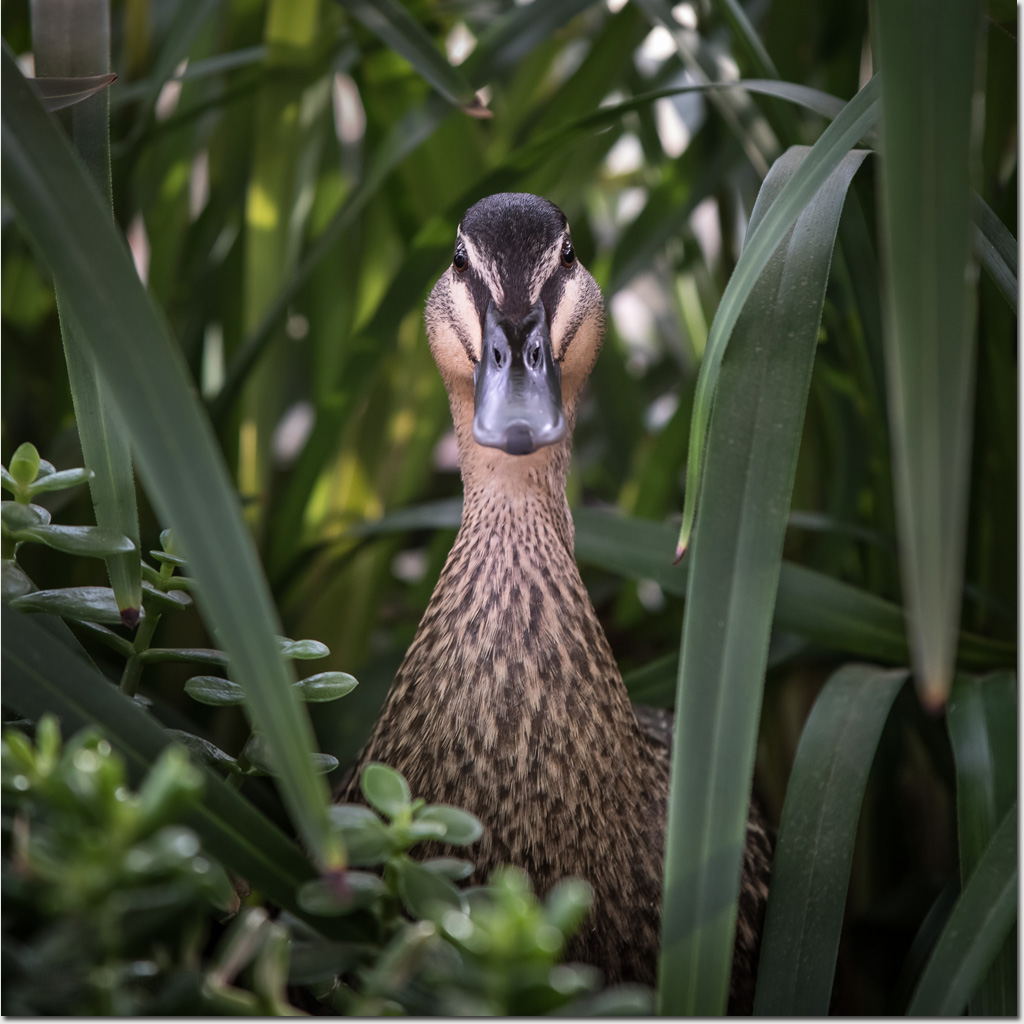
Like some oracle of inner character she sees right through the layers of human veneer.
Just one look into those curious dark eyes is enough to let you know, the duck knows everything!
Photo: Robert Rath, 'The Duck Knows', 1/80s f/4.0 ISO800 200mm
Monday, October 8. 2018
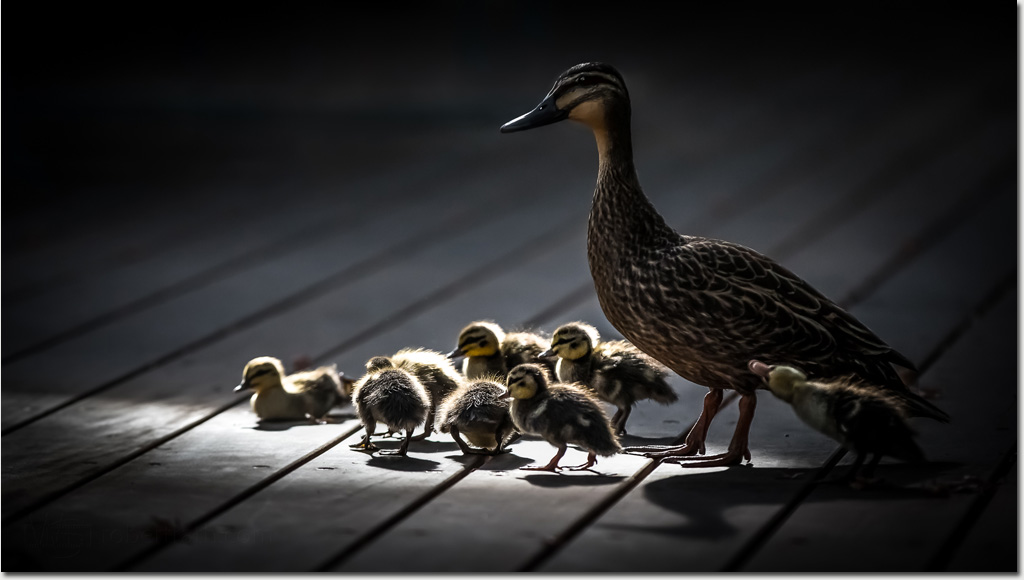
Mother Duck
For a few weeks now mother duck had been sitting on her nest tucked away in a small patch of garden in corporate courtyard.
She has patiently sat there during busy lunch times, quiet outdoor meetings as well as some boisterous Friday afternoon socialising.
This morning to our delight we were greeted by her showing off her new family, parading them around the courtyard and over the decking.
Unfortunately they won't be able to stay as the courtyard is landlocked from the outside world and the only way out for non flying ducklings is through reception.
Just another eventful working day!
Photo: Robert Rath, 'Mother Duck', 1/5000s f/2.8 ISO800 200mm
Sunday, October 7. 2018
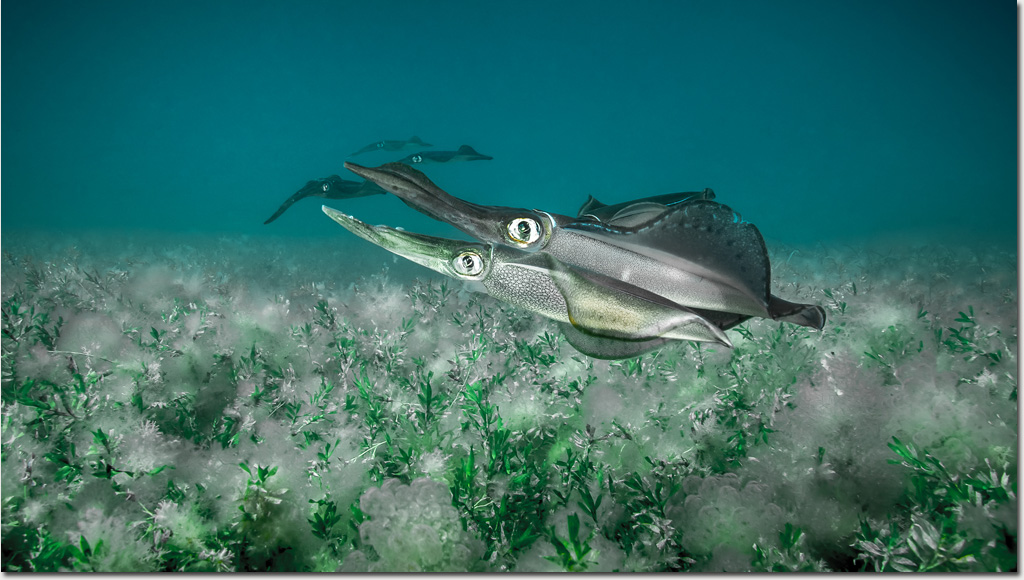
Rapid Bay was a delight today with almost millpond seas, sunshine and blue skies. Even the water looked clear as we gazed out from the car park and began putting together our gear. A short while later we descended in the cold clear water under Rapid Bay Jetty.
We found our first young leafy seadragon a short while into the dive out in the sea grass. We had been told there were quite a few young adults around which was lovely to hear though we only found the one before heading on and out to the old jetty.
Then we found the squid, or perhaps they found us. Far out in the seagrass away from the jetties, the fishers and their squid jags, we came on a school of nearly 50 squid spread out over 20 square meters.
At first they were flighty as is typical for swimming squid but as we settled down into the grass they became curious enough to come over to us for a mutually beneficial closer look.
How amazingly crazy they look with their large bright eyes and those flapping wings. They seem to move in ways that bear no correlation to their body movements like backwards moonwalking through water.
We stayed with these curious calamari until the cold drove us to swim off to warm up again. Perhaps they will still be there next time.
Photo: Robert Rath, 'Curious Calamari', 1/100s f/11 ISO320 35mm
|